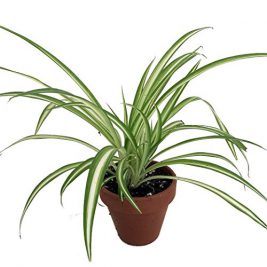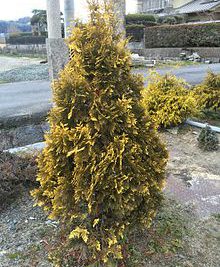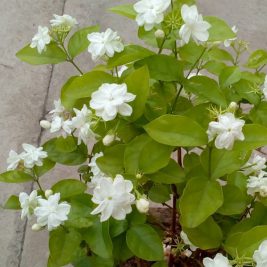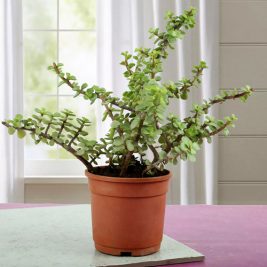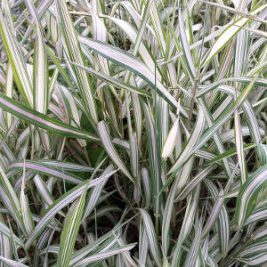Sorry, nothing in cart.
Ornamentals
-
₨299
Height : 1 ft- 2.5 ft
Chlorophytum comosum, often called spider plant but also known as airplane plant, St. Bernard’s lily, spider ivy, ribbon plant, and hen and chickens is a species of perennial flowering plant.
-
₨299
Height 1 ft- 3 ft
Thuja is a genus of coniferous trees in the Cupressaceae. There are five species in the genus, two native to North America and three native to eastern Asia. The genus is monophyletic and sister to Thujopsis. Members are commonly known as arborvitaes, thujas or cedars.
-
₨299
Pot size : 12 inches
If winter blooms and sweet, nighttime fragrance appeal to your senses, consider growing jasmine indoors. Not all [jasmine flowers] are fragrant, but Jasminum polyanthum, the variety commonly used when growing [jasmine] indoors, has a sweet aroma that is particularly fragrant at night.
Jasmine is known for its intensely fragrant blossoms that flower all year to brighten your home. The starry flowers grow in lovely clusters of bright white (or yellow). … Though jasmine is a vine often grown outdoors, the plant also grows easily indoors.
- During the spring and summer months Jasmine needs full sunlight.
- In the winter months Jasmine still needs light, but it doesn’t have to be direct.
- Soil should be moist and well-drained, but do not over water.
- During the summer allow the soil to be moist and let it dry between waterings.
-
₨249
height around 5 inches
Crassula ovata, commonly known as jade plant, lucky plant, money plant or money tree, is a succulent plant with small pink or white flowers. It is native to South Africa and Mozambique, and is common as a houseplant worldwide.
Jade plants are succulent houseplants, which makes them fairly resilient and easy to grow indoors—plus, they’re long-lived! … Though jade plants like the warm, dry conditions found in most homes, they are not as drought tolerant as other succulent species. It’s important to keep the soil moist, but not wet.
-
₨249
Height 1 ft-2 ft
Pennisetum setaceum, commonly known as crimson fountaingrass, is a C₄ perennial bunch grass that is native to open, scrubby habitats in East Africa, tropical Africa, Middle East and SW Asia. It has been introduced to many parts of the world as an ornamental plant, and has become an invasive species in some of them
The grass seems beautiful to look at and adds the vial charm to your place
-
₨119
Height: 1 ft- 2 ft
Ribbon grass (Phalaris arundinacea) is a relatively small grass, growing only about a foot high. It has a dense mat of foliage with strappy leaves that begin with pink or white tinged variegation. As the leaves mature, they become striped with green and white, which has earned them the name gardener’s garters. They are also called reed canary grass. The plants are native to Europe and North America and are hardy in USDA gardening zones 4 to 9. Occasionally the plant will form a small flower in June or July which becomes a grain-like fruit. This is uncommon and the plant is limited to its foliage finery as its focal interest.
Read more at Gardening Know How: Ribbon Grass Information: Tips For Growing Ornamental Ribbon Grass
-
₨99
Height 1 ft- 3 ft
Noted for its attractive evergreen foliage, Ophiopogon japonicus is a desirable Mondo Grass forming dense tufts of arching, strap-shaped, grass-like, dark green leaves.
Although mondo grass tolerates full sun, intense sunlight during summer afternoons can harm the plant’s foliage. Mondo grass will grow in full shade, butcan get leggy rather than forming lush mounds.
-
Contact UsYou may connect with Team Greene at 0330-3450001
-
After SalesEven after Sales, Greene is there for you !!!
-
Return PolicyIf Product has a fault, Greene Returns *(T&C)
